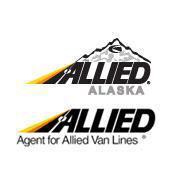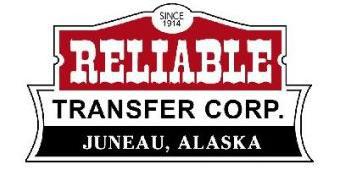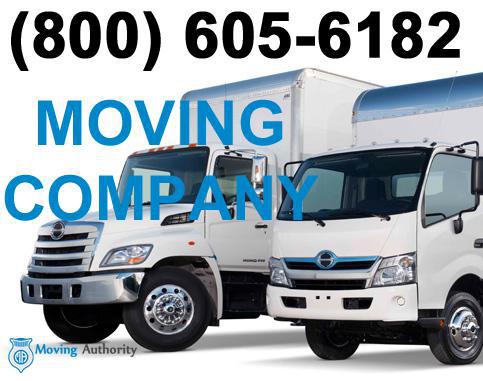Alaska Movers Top Rated
(888) 787-781322 Movers in Alaska
Page 1/2
Find Your Alaska Movers Below
Is moving to Alaska in your future? Then you'll need the top state to state moving company to get you there. The best Alaska moving companies are here on Moving Authority, but that's not all. You can also find a comprehensive Alaska movers cost estimate for the best Alaska movers. We give you the power to spot discount relocation rates and learn excellent moving tips. You'll need an exceptional cross country mover to make the interstate move. Luckily, we offer free information on the best Alaska priced movers. Alaska interstate movers are also easy to find on Moving Authority. If you're moving within Alaska, read local Alaska moving company reviews. Get a free moving quote, read interstate Alaska moving reviews, and so much more, right here on Moving Authority.
Make sure that you secure free moving estimates for everything on your list. This means more than the costs to move your furniture; look into having the best car transport in Alaska. When choosing an American moving company, read through Alaska moving company reviews to find the best team. Choose between Alaska long distance movers, self-service movers, and local movers to get the job done. Take a look at a moving cost estimate free of charge right here on Moving Authority.
Secret Ways to Save on Your Next Move
- Don’t spend money on moving boxes! Free boxes can generally be acquired easily from local businesses.
- Dodge extra fees by packing your moving boxes yourself.
- If you aren't transporting a lot of items, consider renting a cargo van instead of a full-service moving truck.
- Decrease the distance your movers need to travel from the moving space to the truck (and vice versa), if possible (surprise: that costs extra!)
- Sell your unwanted stuff either in a yard sale or online through avenues like Craigslist or eBay.
How Soon Is Too Soon? When To Book Your Move, According to Experts
- It’s never too soon to get down to business with planning your move.
- When you know that you’re moving and you know your new address, begin researching moving companies.
- Once you find a moving company you like, make sure that it fits your budget and has been reviewed well by previous customers.
- You will probably find that you have a lot more stuff than you realize, so starting early is the best way to combat stress about getting everything you own from its origin to the destination.
- For long-distance moves, it’s recommended to get started planning and packing at least two months in advance.
- If you’re staying local, one month of planning time is a good idea.
- Be wary of the cheapest options for moving companies. It may be tempting to want to go with these companies offering outrageously low prices, because who doesn’t like saving money? However, if a price seems too good to be true, there’s probably a reason. Most often, this reason is that the moving company is a rogue mover who will want to scam you.
- Investing in durable packing materials is a must, however, it doesn’t always mean you have to pay an arm and a leg. Bars and liquor stores are unexpectedly awesome resources for moving boxes since the bottles of alcohol are shipped without breaking. These boxes are ideal for your fragile items, and normally just end up broken down in a dumpster after use! Ask politely, and most likely, you shall receive.
Where to Warm Up And Fill Up In The Bitter Chill of Alaska
- Moose’s Tooth Pub & Pizzeria, Anchorage
- Henry’s Great Alaskan Restaurant, Kodiak
- Double Musky Inn, Girdwood
- Lavelle’s Bistro, Fairbanks
- Red Dog Saloon, Juneau
Aurora in Alaska: Everything You Need To Know About This Natural Phenomenon
- Aurora Borealis, (most commonly called the Northern Lights), can be seen in the fall and winter months in the sky.
- This green and blue ribbon of dancing light happens when solar energy is trapped in the openings of the Earth’s electromagnetic field.
- The lights can be seen most vibrantly in northern locations of the planet above the Arctic Circle
- The most popular place in Alaska to see the aurora borealis is Anchorage, though it can be seen from several different spots in the state.
Movers By City in Alaska
Do you know?

- A moving company, removalist, or van line are all companies that help people as well as other businesses to move their goods from one place to another. With many inclusive services for relocation like packing, loading, moving, unloading, unpacking and arranging of items can all be taken care of for you. Some services may include cleaning the place and have warehousing facilities.
- According to the U.S. Census Bureau, 40 million United States citizens have moved annually over the last decade. Of those people who have moved in the United States, 84.5% of them have moved within their own state, 12.5% have moved to another state, and 2.3% have moved to another country.
- In the United States and Canada, the cost for long-distance moves is generally determined by a few factors. The first is the weight of the items to be moved and the distance it will go. Cost is also based on how quickly the items are to be moved, as well as the time of the year or month which the move occurs. In the United Kingdom and Australia, it's quite different. They base price on the volume of the items as opposed to their weight. Keep in mind some movers may offer flat rate pricing.
- Many people are familiar with this type of moving, using truck rental services, or borrowing similar hardware, is known as DIY moving. Whoever is renting a truck or trailer large enough to carry their household goods may obtain moving equipment if necessary. Equipment may be items such as dollies, furniture pads, and cargo belts to protect furniture and to ease the moving process.
- As most people have experienced, moving does involve having the appropriate materials. Some materials you might find at home or may be more resourceful to save money while others may choose to pay for everything. Either way materials such as boxes, paper, tape, and bubble wrap with which to pack box-able and/or protect fragile household goods. It is also used to consolidate the carrying and stacking on moving day. Self-service moving companies offer another viable option. It involves the person moving buying a space on one or more trailers or shipping containers. These containers are then professionally driven to the new location.
- There many reasons for moving, each one with a unique and specific reason as to why. Relocation services, employee relocation, or workforce mobility can create a range of processes. This process of transferring employees, their families, and/or entire departments of a business to a new location can be difficult. Like some types of employee benefits, these matters are dealt with by human resources specialists within a corporation.














